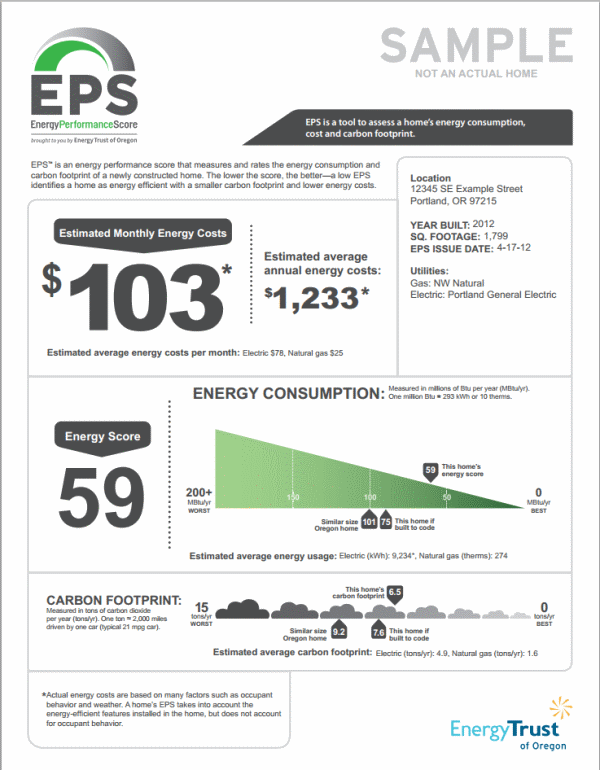by: Michael Freels
Energy Performance Score (EPS) is:
- An energy performance scoring metric or rating (think of mpg for homes)
- A tool that works with all programs and all homes, regardless of their certifications

- Focused on the energy consumption and associated carbon for a home
- Estimated energy costs
- Lists energy-efficient features built into the home
EPS is NOT a certification, program, guarantee, cash incentive, or an alternative to ENERGY STAR®, Earth Advantage Homes Standard®, LEED® for Homes or any other certification program.
Why was EPS developed?
To create an easy way to assess and compare important factors when buying a new home:
- Estimated utility costs
- Energy efficiency
- Environmental impact
- Motivate consumers to make energy-efficiency improvements
EPS provides value to homeowners:
- Allows home-to-home comparisons
- Provides clarity to energy efficiency claims
- Quantifies energy use on a scale
- Educates homebuyers/owners about a home’s energy use, environmental impact, estimated utility, costs and potential improvements
Various factors impact the EPS including: Insulation level, Air leakage / Infiltration, Heating and cooling systems, Lighting, Water heating, Square footage, and Renewable energy systems such as solar.
EPS Calculation
REM/RateTM software is used to model the home
- Measured or verified inputs include:
- Home size
- Insulation levels
- Air and duct leakage
- Heating and cooling systems
- Solar energy systems (if applicable)
- Assumed standardized conditions include:
- Occupant behavior
- Appliances
- Thermostat settings
- Number of occupants (based on bedroom count)
Why a carbon score?
- It helps homeowners make the connection between energy and the environment
- Increasing awareness of the effects of carbon on the environment
- Carbon is specific to the homeowner’s utility or utilities
EPS Score Sheet Example


